This was published 3 years ago
Monoliths, canyons, and unexpected waterfalls: Australia’s greatest outback sights
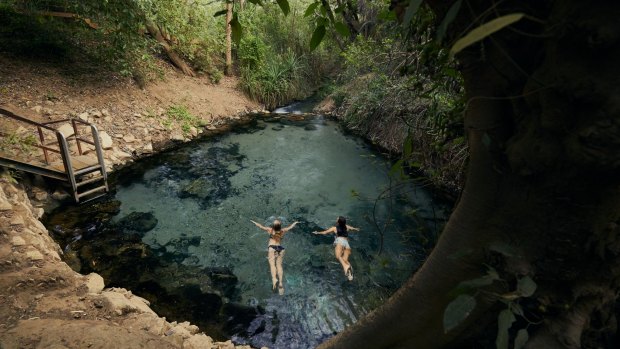
Natural thermal springs on the banks of the Katherine River, NT.Credit: Matt Cherubino/Tourism NT
Australia's vast, sprawling outback is famed for its long, intimidating stretches of absolutely nothing. But between the featureless desert and seemingly endless scrub, there are a few places that make the journey through the emptiness absolutely worth it. Monoliths, canyons, weird rock formations and unexpected waterfalls are amongst what makes the outback special, and here's where to find the highlights of Australia's remote interior.
Uluru, Northern Territory
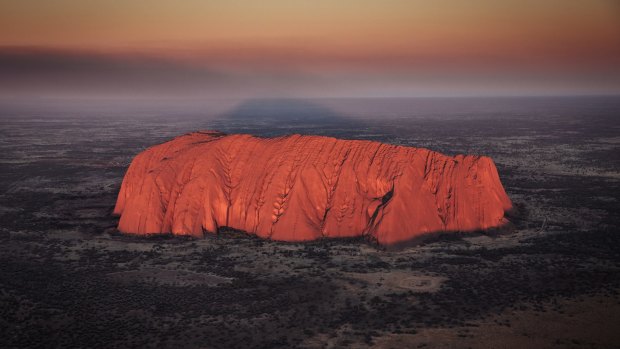
Uluru glowing at sunrise during a helicopter tour.Credit: Emilie Ristevski/Tourism NT
The big red rock in the middle of nowhere has become one of the defining symbols of Australia, to the point where it can single-handedly sustain a tourism industry. The good news is that it doesn't disappoint. Climbing is now, belatedly, banned, but the three to four hours spent walking around the base is one of the most mesmerising schleps in Australia. The colours, the bulges, the caves, the vegetation and the Dreaming stories are all hearteningly surprising. See parksaustralia.gov.au/uluru
Kings Canyon, Northern Territory
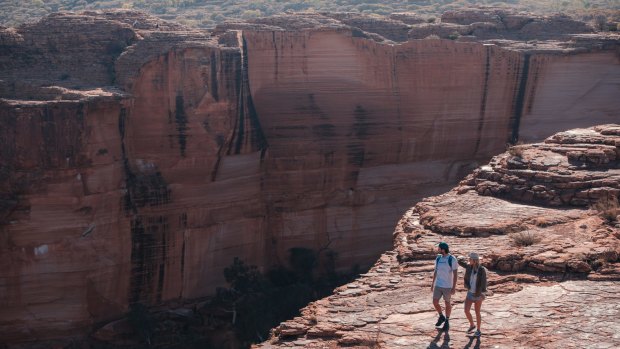
Credit: Nic Morley/Tourism NT
Kings Canyon too often plays third wheel to Uluru and Kata Tjuta, but it's arguably the most spectacular spot in the Red Centre. Part of Watarrka National Park, the canyon cuts into the George Gill range, and the hike up to the rim is tough going, but rewards with magical views. It's more than just panoramas, though – on the way, the main walking trail passes weird weathered rocks and a lush oasis nicknamed 'the Garden of Eden'. See nt.gov.au
The Bungle Bungles, Western Australia
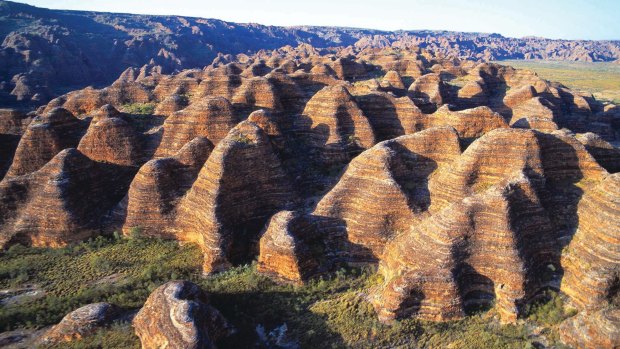
The Bungle Bungle Range, Purnululu National Park.Credit: Peter Carter/Tourism WA
If weathered rocks are your thing, then the Bungle Bungles in the Kimberley. Part of the Purnululu National Park, they are a mountain range that has been weathered away by rainfall and desert winds over the centuries. What's left is a series of stripy, beehive-shaped rock formations, with the different layers of sedimentary rock clearly on view. It looks rather like aliens have come down and got their paint set out. See parks.dpaw.wa.gov.au
Lake Eyre, South Australia
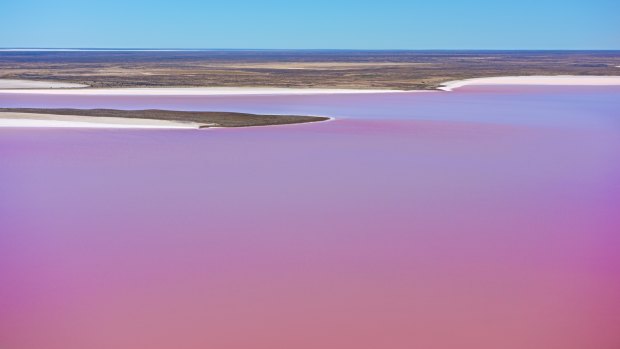
Credit: Grant Hunt/Tourism SA
The giant salt lakes of South Australia can be bewitching. The salt twinkles across the horizon, creating all manner of seductive mirages framed by rugged orange outback. Lake Hart, just off the Stuart Highway, is the easiest to access, but Lake Eyre is the biggest. Wright's Air in William Creek offers scenic flights over Lake Eyre, which become significantly more popular on the rare occasions when the lake starts to flood and pull in wildlife from miles around. See wrightsair.com.au
Coober Pedy, South Australia
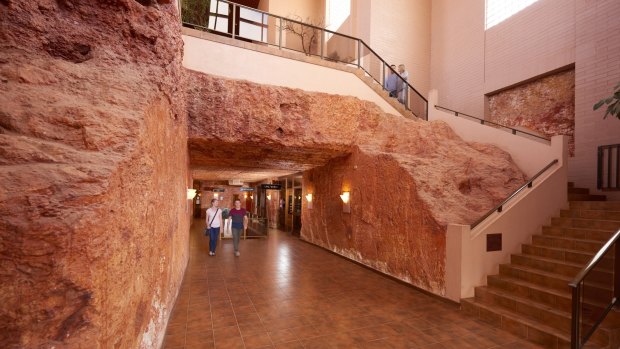
Credit: Adam Bruzzone/Tourism SA
Further along the Stuart Highway is Australia's quintessential outback town. Coober Pedy is the opal mining capital of the world, and if you want to try your luck, you can go fossicking for opals in the giant rubble heaps dotted around the town. It gets ferociously hot in Coober Pedy, so most people live underground. This has led to some serious creativity, however, and the underground show homes and churches are worth visiting as well as the mines. See parks.dpaw.wa.gov.au
The Undara Lava Tubes, Queensland
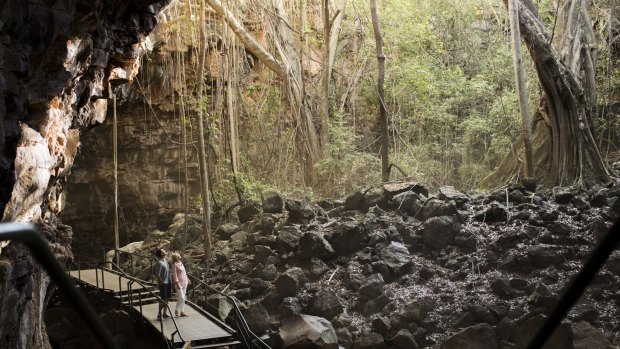
Credit: TEQ
The Undara Volcanic National Park, 275km south-west of Cairns is home to what looks like a series of caves. However, they were created in volcanic eruptions around 190,000 years ago, when phenomenal amounts of hot lava flowed along a river bed. The outer layers cooled and solidified first, leaving hollow tubes along a 160km route. It's now possible to go inside the tubes – some are ten metres high – on a guided tour. See undara.com.au
Lake Mungo, New South Wales
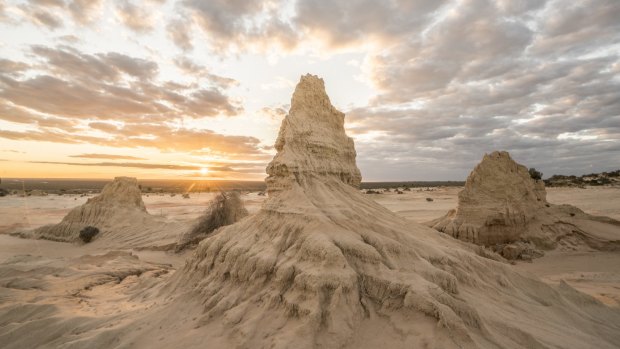
The Walls of China, Mungo National Park. Credit: Dee Kramer/Destination NSW
The outback scenery at Lake Mungo is beautiful enough in its own right. The vast crater of the long-dried lake is flanked by a dune system full of sand and rock formations that show different eras in geological history with different colours. But Lake Mungo is more about the cultural heritage. This is where Aboriginal skeletons have been found, showing that Australia has been inhabited for far longer than previously thought. Information on the finds is displayed inside the visitor centre. See nationalparks.nsw.gov.au
Katherine Gorge, Northern Territory
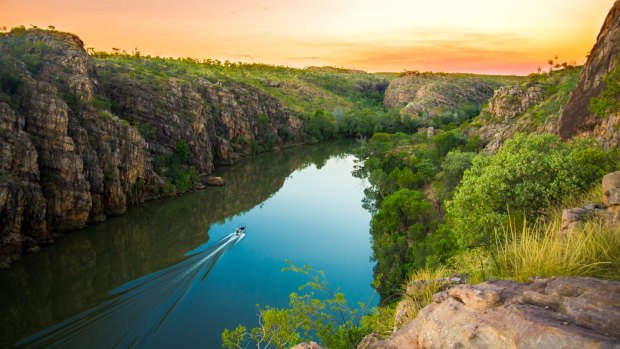
Credit: NT Tourism
It's not one gorge, it's several of them, but the steep sandstone walls of Nitmiluk National Park make them an absolute pleasure to cruise or kayak along. On the way, there are stops by natural pools perfect for swimming and paddling in. Indigenous-owned Nitmiluk Tours offers a series of tours exploring the gorges, waterfalls and occasionally-sighted freshwater crocodiles. See nitmiluktours.com.au
Fortescue Falls, Western Australia
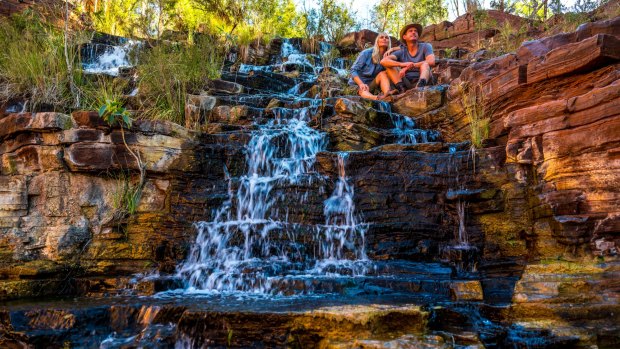
Fortescue Falls in Dales Gorge, Karijini National Park, WA.Credit: Dan Avila/Tourism WA
Amongst the red rock dryness of the Karijini National Park, Fortescue Falls comes as a delicious change of scenery. A seemingly impossible permanent waterfall exists in the unforgiving Pilbara, surrounded by lush green ferns. Anyone who can resist stripping off for a swim in the Fern Pool next to the waterfall has iron self-discipline. See parks.dpaw.wa.gov.au
Wilpena Pound, South Australia
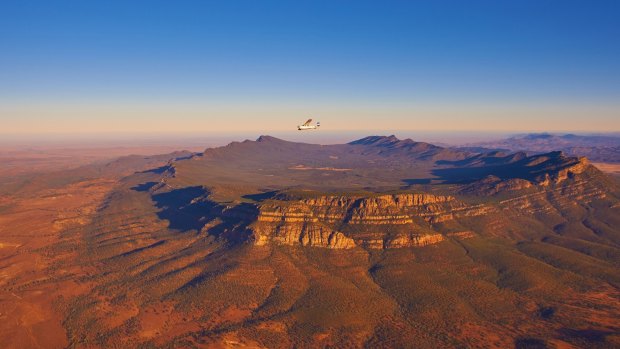
Credit: Tourism SA
Rising out of the dusty landscape of the Flinders Ranges like a giant cereal bowl, Wilpena Pound is an extraordinary natural rock amphitheatre. While hugely impressive seen from a distance or from above, it's arguably even more special inside, where tiny, distinct ecosystems flourish, partially protected by the rock walls by the elements. The Wilpena Pound Resort is on the doorstep, offering 4WD tours as well as bushwalking information. See wilpenapound.com.au
Disclosure: David Whitley has been a guest of Tourism Australia and the state tourism authorities.
See also: The ten most beautiful small towns in Australia you must visit
See also: Paradise on a budget: Australia's cheapest islands
Sign up for the Traveller Deals newsletter
Get exclusive travel deals delivered straight to your inbox. Sign up now.